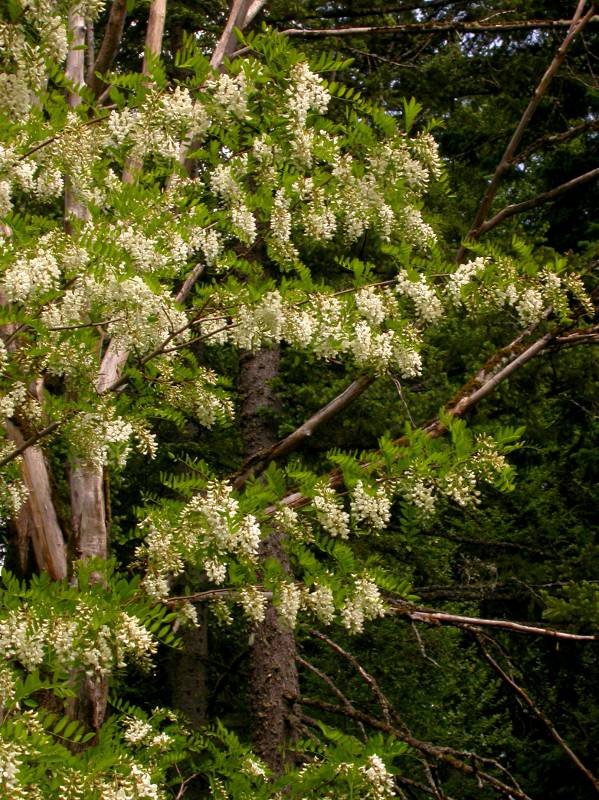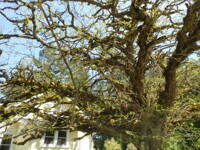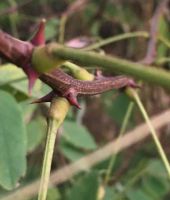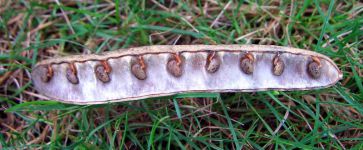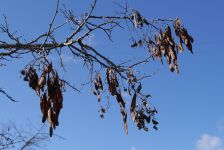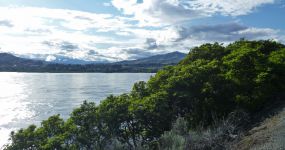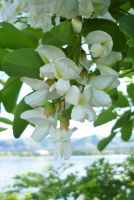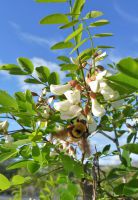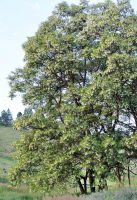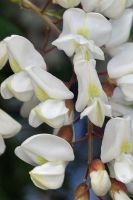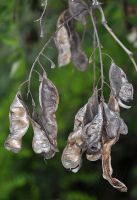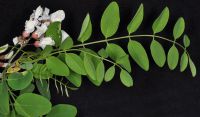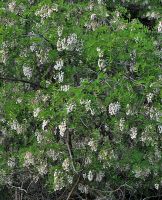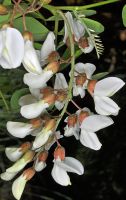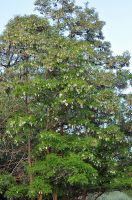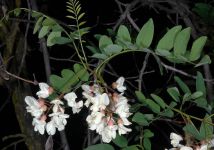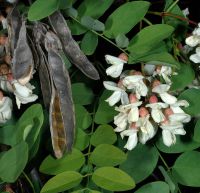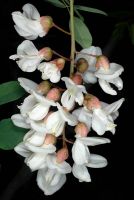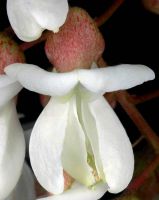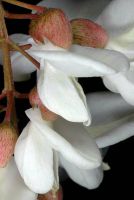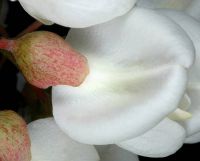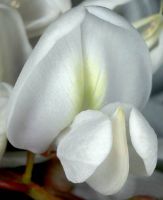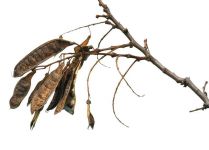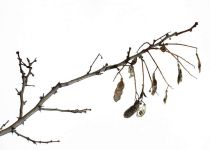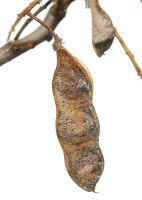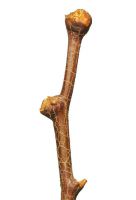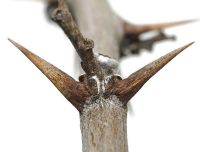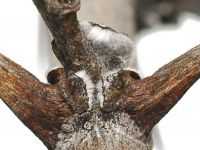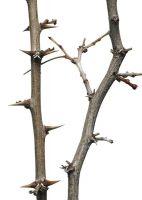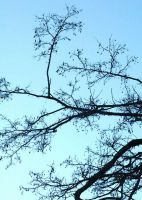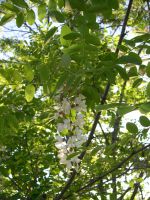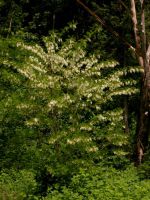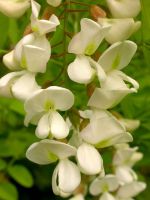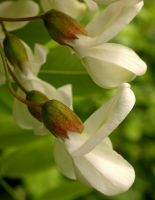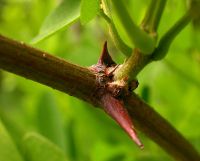Distribution: Occurring on both sides of the Cascades crest in Washington; introduced from Alaska to California, east to the Rocky Mountains, native from the Great Plains to eastern North America.
Habitat: Stream and river banks, forest edge, wastelots, abandoned homesteads, and disturbed areas.
Flowers: May-June
Origin: Introduced from central and eastern North America
Growth Duration: Perennial
Conservation Status: Not of concern
Well-armed tree to 25 m. tall, the bark thick.
Leaves odd-pinnate, leaflets 11-21, lanceolate to elliptic-oval, 2-4 cm. long, bright green on the upper surface, paler beneath; stipules often modified into thorns.
Inflorescence of large, pendant, axillary racemes 10-14 cm. long and 30- to 70-flowered; flowers fragrant, white, 14-20 mm. long; calyx broadly bell-shaped, thickly pubescent, 5-6 mm. long, the 5 teeth very broad; corolla pea-like, the banner reflexed, with a yellow blotch at the base.
Pod flattened, 6-10 cm. long, 2-valved.
Publication: Sp. Pl. 2: 722. 1753.
Robinia pseudoacacia L. var. pyramidalis (Pépin) C.K. Schneid.
Robinia pseudoacacia L. var. rectissima (L.) Raber
PNW Herbaria: Specimen records of Robinia pseudoacacia in the Consortium of Pacific Northwest Herbaria database.
WA Flora Checklist: Robinia pseudoacacia checklist entry.
OregonFlora: Robinia pseudoacacia information.
E-Flora BC: Robinia pseudoacacia atlas page.
CalPhotos: Robinia pseudoacacia photos.
USDA Plants: Robinia pseudoacacia information.


